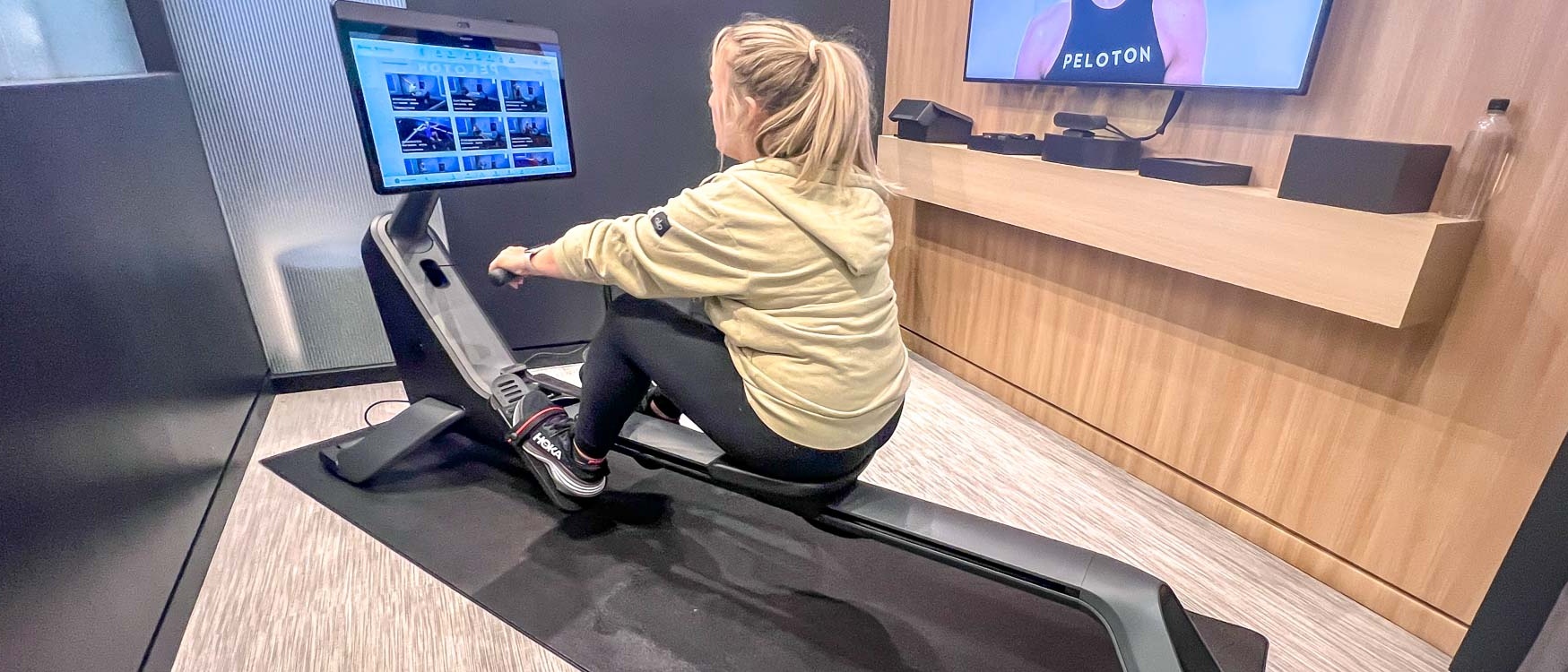Early Verdict
The Peloton Row is a promising (though pricey) at-home workout machine that prioritizes form feedback to help you perfect your rowing technique. Upright storage and swiveling display add to the rower’s practicality.
Pros
- +
Live form feedback
- +
Comprehensive form insights
- +
In-class drills
- +
Easy upright storage
- +
Swiveling display
Cons
- -
Quite expensive
Why you can trust Tom's Guide
Peloton’s long-awaited rowing machine official: The Peloton Row can be purchased starting September 20 with availability promised by the end of this year. But the machine’s price might give you pause, checking out at $3,195 as the most expensive piece of Peloton hardware you can buy right now.
So how is Peloton Row prepared to justify the cost? For starters, it feels more full-featured than Peloton’s other machines based on my brief hands-on experience. Live form feedback and in-class drills eased the intimidation during my beginner’s class, while post-class insights offered highly specific stroke data indicating which elements of my technique needed work (and which parts, surprisingly, weren’t so bad.)
Peloton says with routine use, the assessments from Peloton Row could help a rowing newbie master proper form in just six weeks. In the meantime, the display will swivel so you can leverage Peloton’s non-rowing exercises, and the machine as a whole will store upright to save you space.
A piece of equipment like Peloton Row is something we’d test over several weeks before sharing a rated review or adding it to our list of the best home gym equipment. But for now, here are our first impressions, as well as information about availability, design, storage, class selection and more.
Peloton Row price and release date
Peloton Row costs $3,195 including delivery and setup, making it Peloton’s priciest workout machine currently offered from the company. For comparison, the Peloton Bike starts at $1,895 and the Peloton Tread starts at $2,495. Only the Peloton Tread Plus was more expensive (starting at $4,295,) but it was recalled in May 2021 and shows no signs of return.
As of September 20, Peloton Row is available for preorder. Peloton has not stated an exact Peloton Row release date, but has promised units will begin shipping in December 2022.
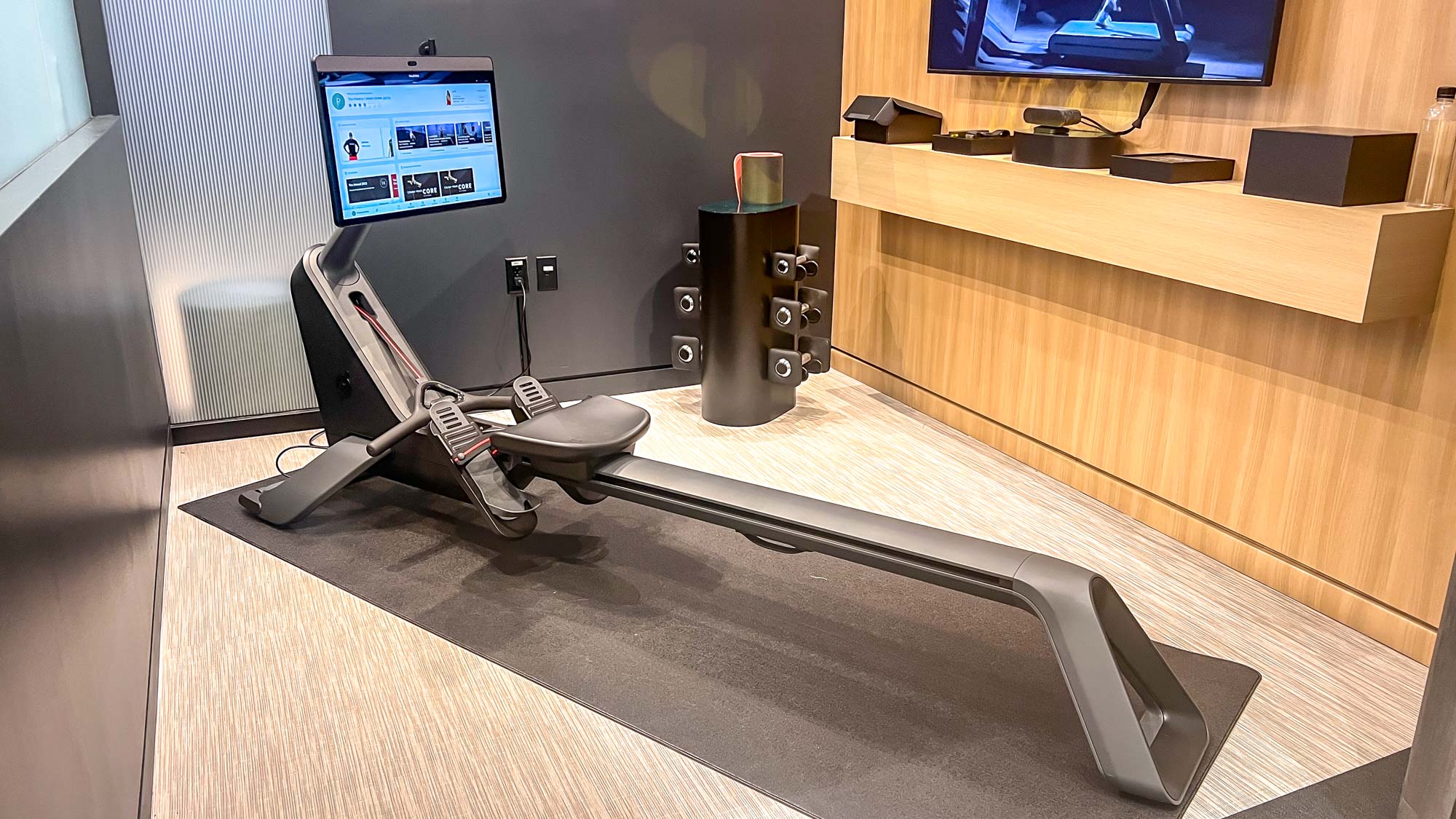
Peloton Row hands-on: Design
Peloton Row definitely follows the design language of Peloton’s hardware collection, coming in a mostly matte-black finish with red accents. It looks more modern and minimalistic than the rowing machines I remember from the gym, with the flywheel entirely concealed in the compartment at the front of the unit.
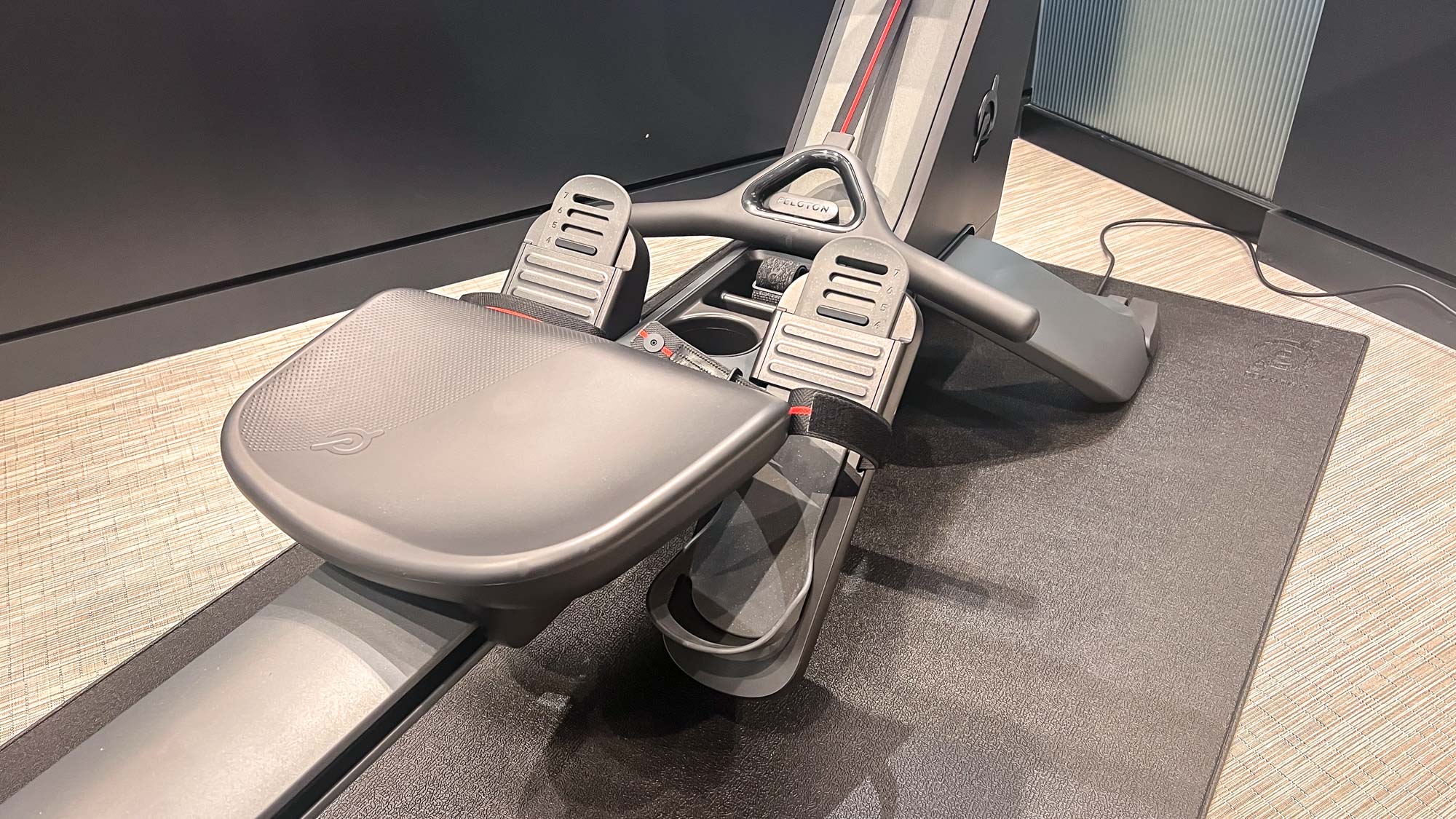
While some rowing machines might attempt to recreate a realistic rowing experience at the expense of comfort, Peloton Row features a cushioned seat that’s contoured in a way that’s supposed to release pressure points of proper rowing form. The handle is also curved, unlike the grip of a boat oar, to encourage proper form that targets all the upper body muscles activated in a well-executed stroke.
The slanted foot platforms are adjustable to ensure the Velcro strap crosses the widest part of your foot while your heel sits in a cup. I was wearing my Hoka Bondi 8’s, and even with the thick cushions, my sneakers tucked securely into the foot plates.
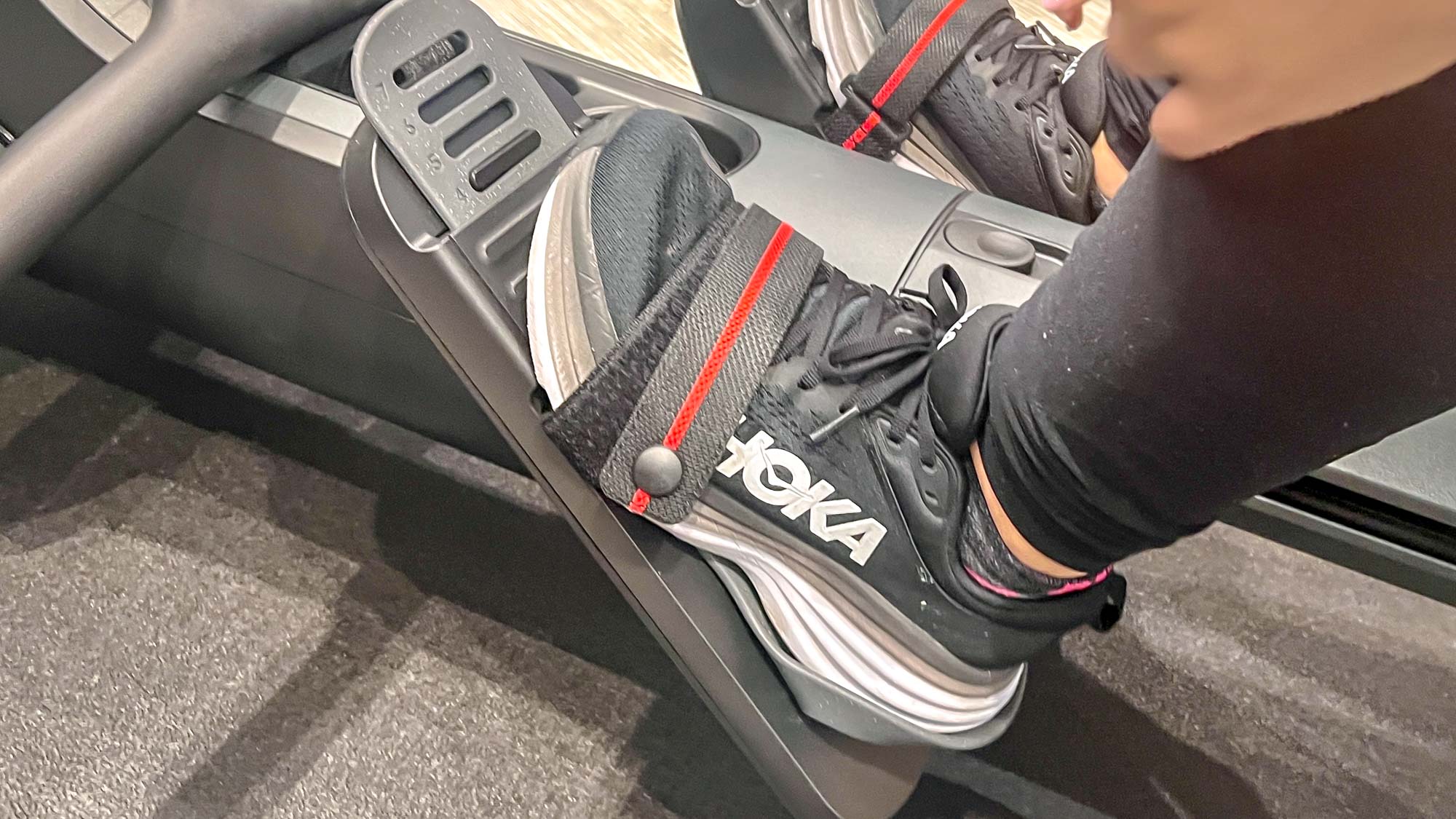
As other Peloton machines, the display is central to the experience. The Peloton Row features a 24-inch HD screen, that’s large enough to see even from the finish (or the most extended part of a rowing stroke). But the best part of the screen is that it swivels, so you can conveniently follow along with floor workouts. Only the Peloton Bike Plus has the same versatility.
Peloton Row hands-on: Storage
Storage is a common concern of home rowing machines, with the beam extending out quite farther than the seat of any of the best exercise bikes, for example. Luckily, Peloton Row can be stowed upright to stand 7’10” tall. It’s recommended to mount the included wall plate and strap that secures around a handle beneath the beam to prevent the 150-pound machine from possibly tipping over.
Moving Peloton Row between the vertical and horizontal positions was surprisingly simple. I tried it a few times during my demo, first bending the display arm down to tuck the screen away. The wheels at the front of the frame then helped me find leverage to stand the rower upright.
Peloton Row hands-on: Classes and membership
Peloton Row is adding rowing workouts to Peloton’s existing and extensive catalog of workout classes. Current Peloton instructors Matt Wilpers and Adrian Williams are part of the 5-coach rowing team, along with new instructors Ash Pryor, Alex Karwoski and Katie Wang.
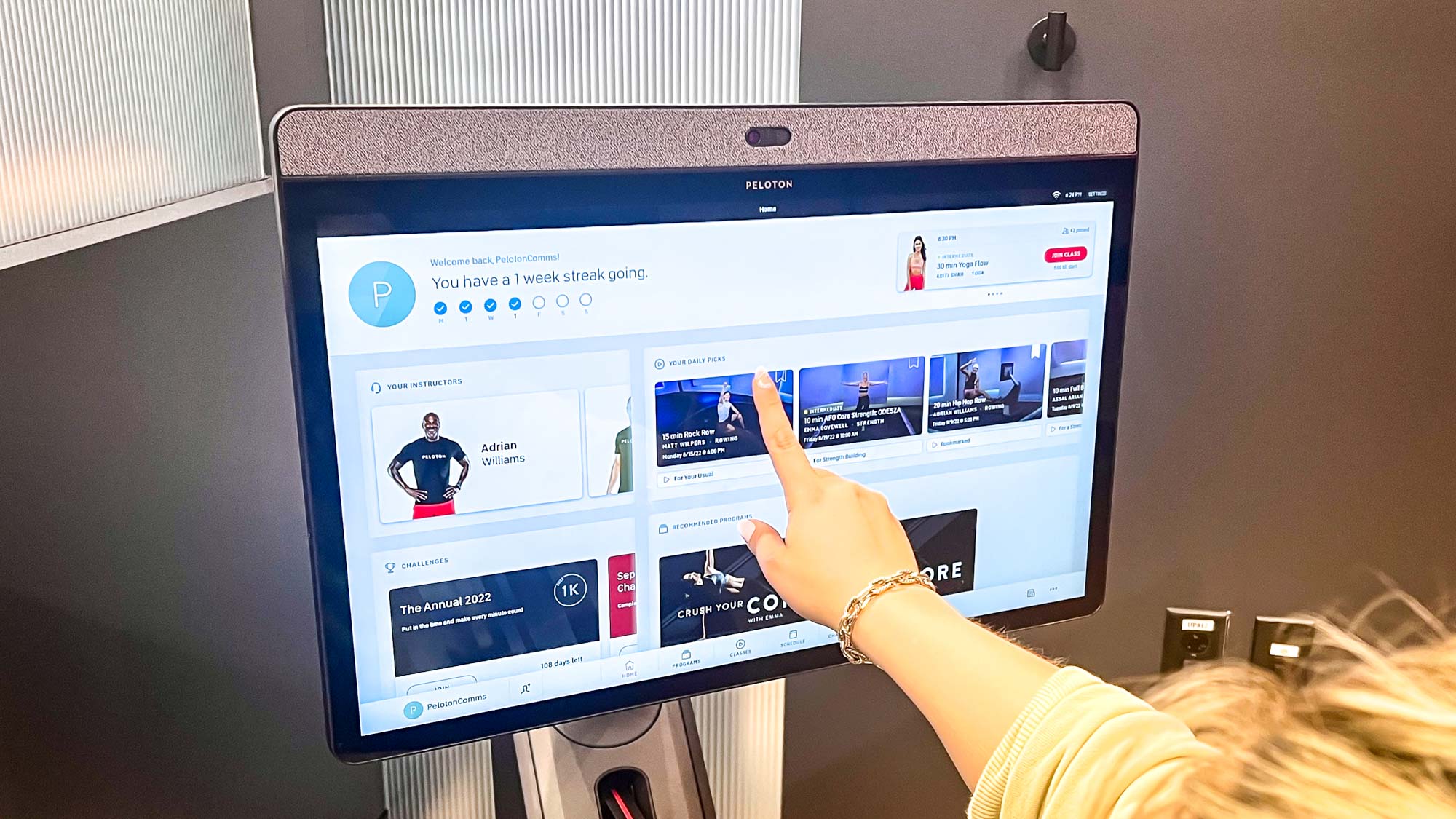
The classes range in duration and music playlists, though most are between 20 to 30 minutes. At launch, there will be traditional rowing classes for all levels, as well as bootcamp classes that combine rowing and floor workouts in one session. Guided Scenic and Live classes coming early next year.
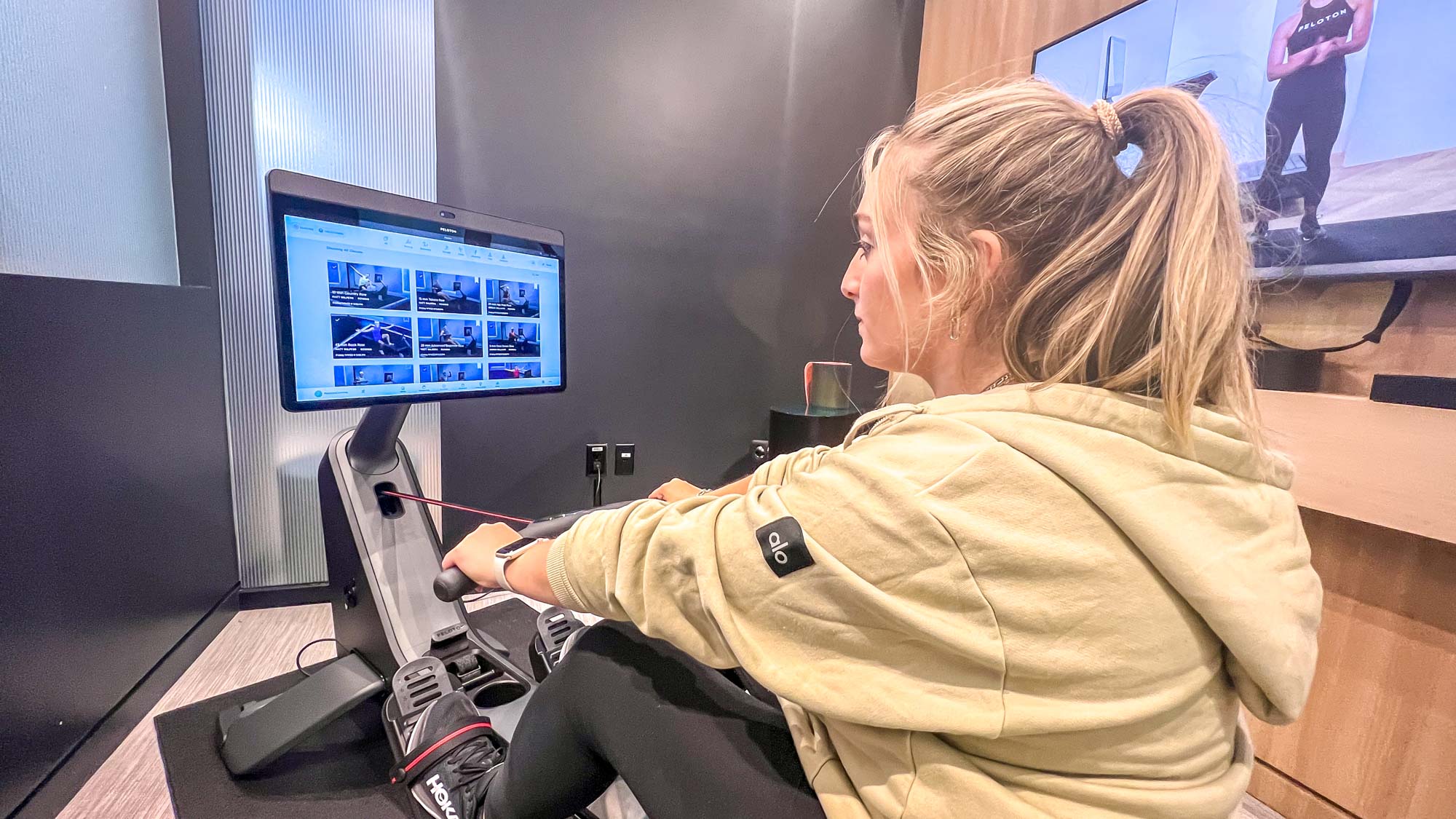
In order to use these classes, you’ll need a Peloton All-Access Membership, which costs $44/month. The Peloton app membership alone costs $12.99/month, but if you have a machine you’ll need the All-Access membership tier. Though as with most subscription-based workout platforms, multiple household members can share the membership while maintaining individual profiles.
Peloton Row hands-on: Performance
Rowing is occasionally part of my gym warm-up or OrangeTheory class, so I’m still classified as a beginner. Before taking my first class on the Peloton Row, a form calibration process walked me through each part of a rowing stroke — the catch, drive, finish and recovery — to create an outline of my movement.
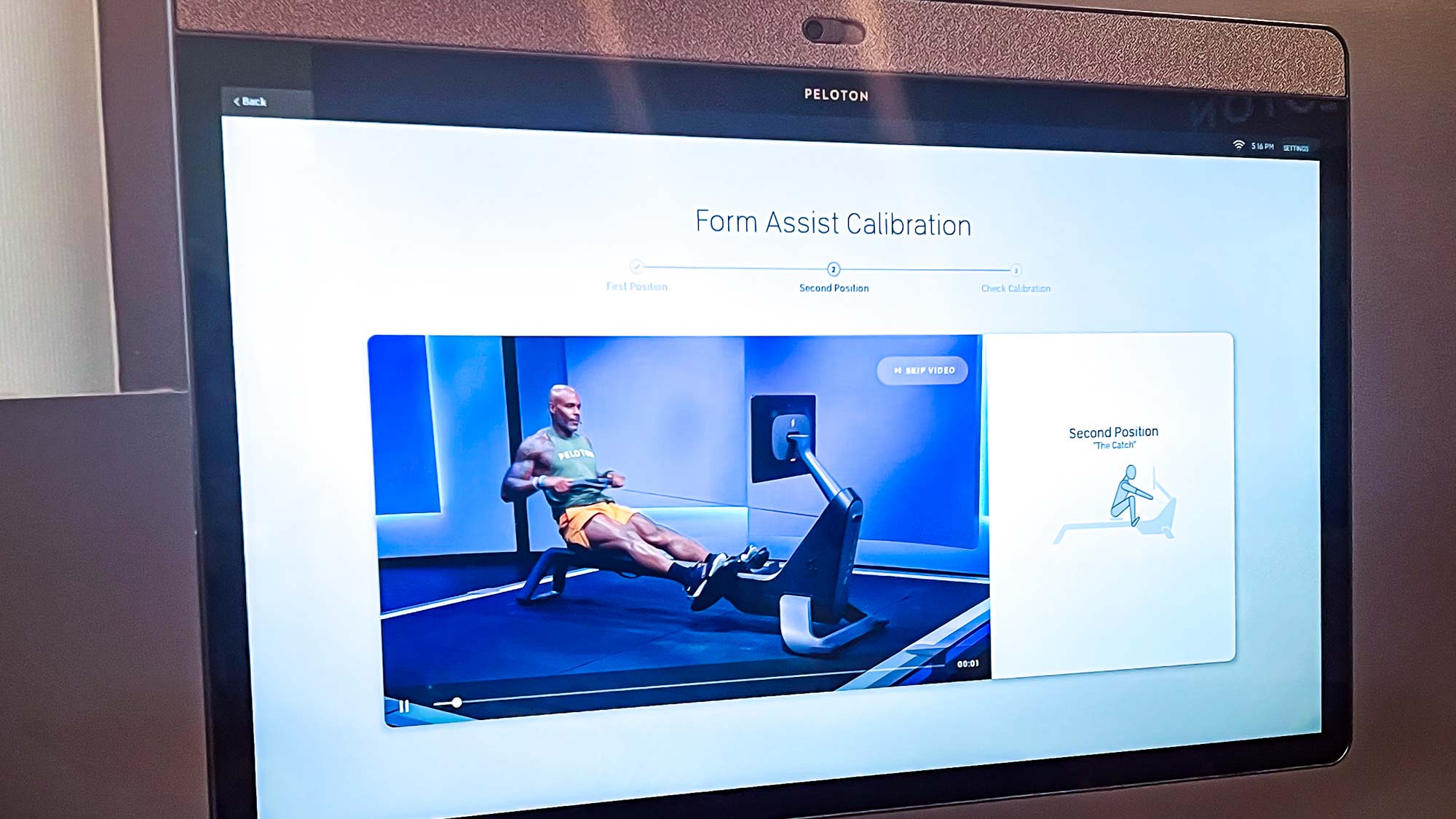
During class, the sensors in the handle and beam power formed an animated side profile that tracked my movement. The avatar flashed red on the parts of my body where I didn't exhibit proper form, which happened a lot at the start of class. Proper rowing technique is important not just for targeting the appropriate muscle groups, but for preventing injury, too.
Keeping an eye on the guide as class progressed, my form seemed to improve. That’s when I could start checking my in-class metrics, pace and stroke rate. These numbers show power and how fast I would row 500 meters. The instructors call out pace targets during class, but they’re adjusted based on six levels, so you could personalize targets based on your experience.

These metrics and the Peloton leaderboard went dark during the drill portions of class. I liked how this let me focus on training different parts of my rowing form without concerns of my metrics or competition between other Peloton members. Drills also slowed down the class, offering some recovery without getting off the machine.
Despite music playing during class, the machine didn't make all that much noise. The electronically controlled resistance allowed for near-silent movement. As long as I paired Bluetooth headphones to the machine, I think I'd be able to workout in my apartment without disrupting my family members.
Finally, after I finished the 20-minute class, I reviewed my form insights and form rating. This data analyzed my form throughout the entire class, offering more feedback than I assumed could possibly be available from just one workout. The goal over time would be to work on the form elements I struggled with more than others to improve my form rating.
Peloton Row outlook
As someone who doesn't do rowing workouts, I didn't think I'd like Peloton Row. But it has the premium bells and whistles I'd want to see if I were to pay nearly $3,200. I was most surprised by the amount of feedback, feeling that I could become a proficient rower if I acted on the data for several weeks.
Rowing is a highly technical workout, but when done right, you can work 80 percent of your muscles in a 15-minute workout. As such, a machine like Peloton Row is a full-body workout solution. I think the swiveling screen and vertical storage make it all the more viable.
Hopefully as units ship out later this year, we'll be able to conduct an in-depth review to gauge if it's truly worth the high price tag.
Next: We asked Peloton if you can do the Peloton rowing workouts on your own rowing machine — here's what they said.
Kate Kozuch is the managing editor of social and video at Tom’s Guide. She writes about smartwatches, TVs, audio devices, and some cooking appliances, too. Kate appears on Fox News to talk tech trends and runs the Tom's Guide TikTok account, which you should be following if you don't already. When she’s not filming tech videos, you can find her taking up a new sport, mastering the NYT Crossword or channeling her inner celebrity chef.
